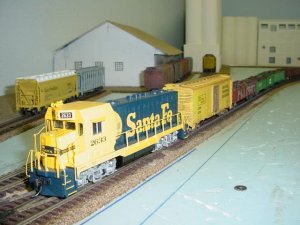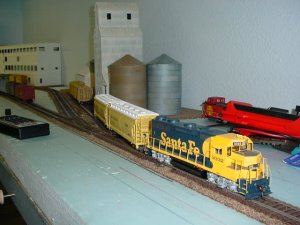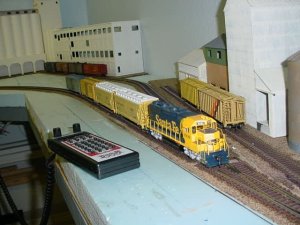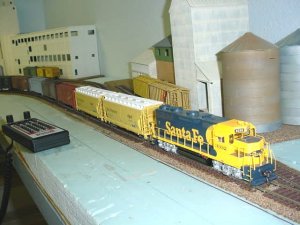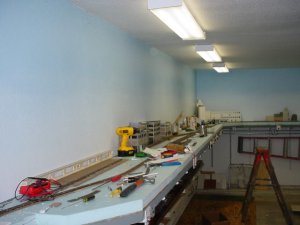Since I have quite a bit of my track down and wired, and I have some of the magnets and turn-out controllers installed, I decided to run a mini-operating session to see if things would work as I expected.
First, some pics:
First, some pics:


